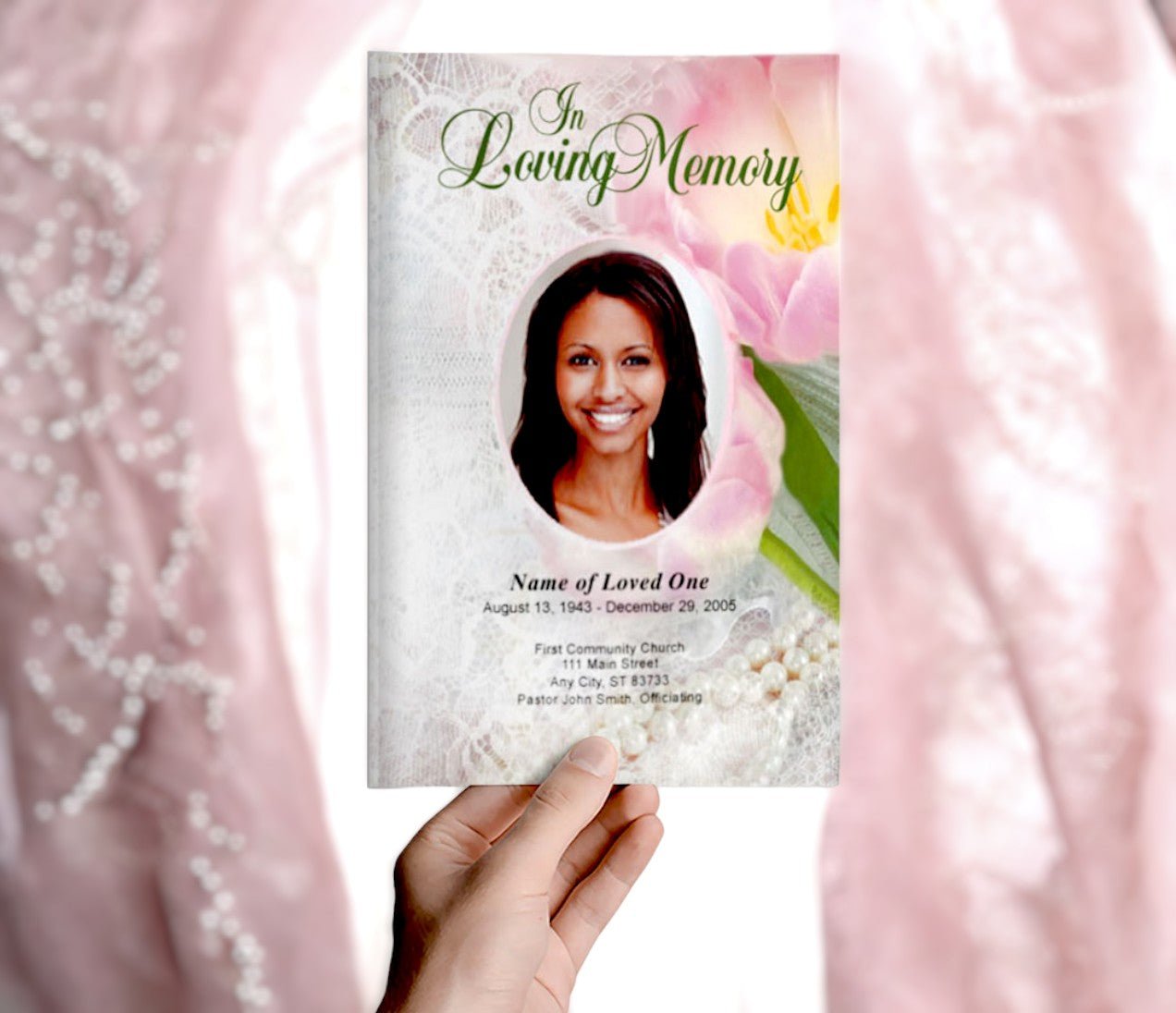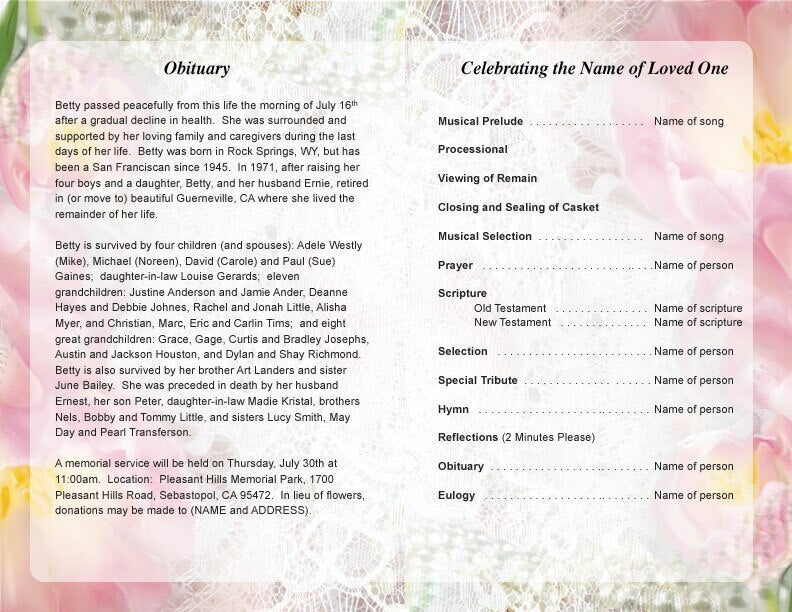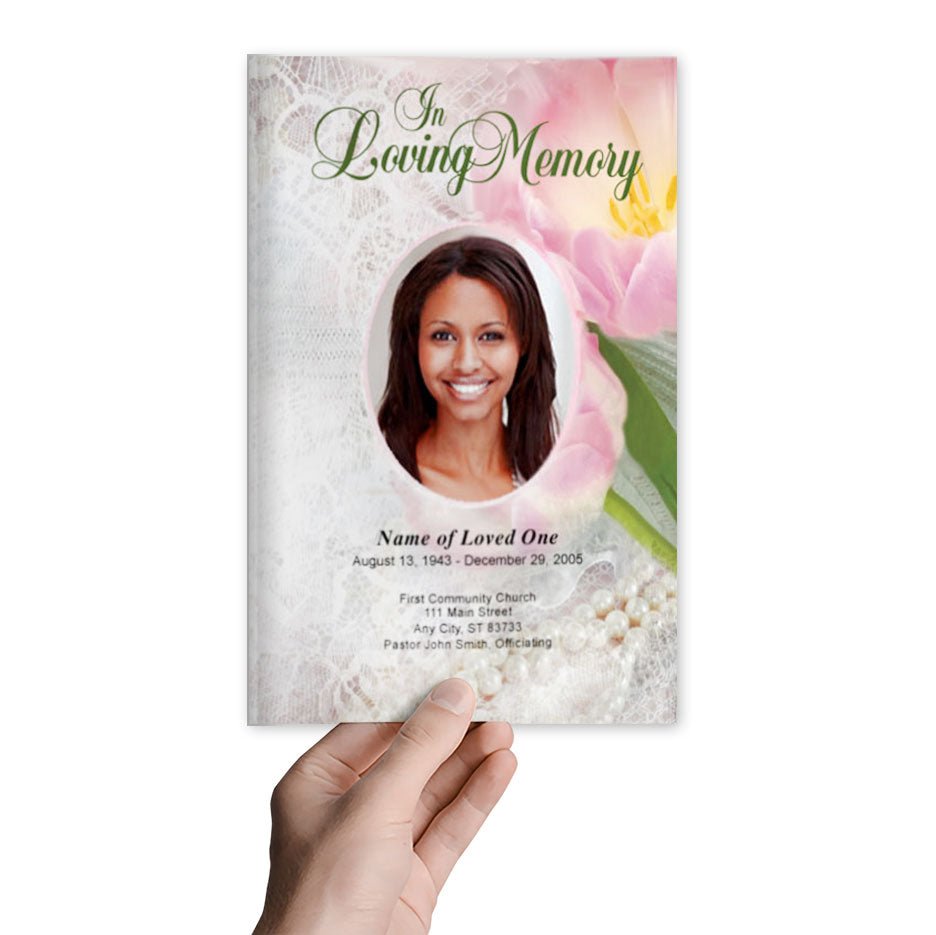What Are Some Common Mistakes to Avoid When Selecting Photos for a Funeral Program?

Selecting the right photos for a funeral program is one of the most important steps in creating a meaningful tribute to a loved one. Photographs capture the essence of a person’s life, offering a visual representation of their journey, personality, and impact on others. However, choosing the right images for a funeral program can be challenging. The goal is to select photos that reflect the life of the deceased in a respectful and heartfelt manner.
In this article, we’ll highlight some common mistakes people make when selecting photos for a funeral program and provide tips on how to avoid them to create a beautiful and fitting tribute.
1. Choosing Low-Quality or Blurry Photos
One of the most common mistakes people make when selecting photos for a funeral program is using low-quality or blurry images. Funeral programs are meant to be keepsakes, and blurry or pixelated photos can detract from the quality of the program.
Tip to Avoid This Mistake:
- Choose high-resolution photos to ensure that they print clearly and look sharp. If the photos you have are low-resolution or pixelated, consider scanning physical photos at a high resolution or using photo restoration services to improve quality.
- When selecting digital photos, aim for images that are at least 300 DPI (dots per inch) to ensure they look crisp when printed.
2. Using Photos That Do Not Reflect the Deceased’s Personality
While it’s tempting to choose photos based on availability or convenience, it’s essential that the selected images reflect the true personality of the deceased. Photos that don’t capture the essence of the person’s life or character might not resonate with family and friends attending the service.
Tip to Avoid This Mistake:
- Select images that highlight significant moments from the deceased's life, such as family gatherings, vacations, or milestones. These photos should evoke positive emotions and tell a story about their personality and passions.
- Choose pictures that show the person in their best light, whether it’s laughing with friends, enjoying a hobby, or simply being themselves.
3. Overcrowding the Program with Too Many Photos
While it’s tempting to include as many photos as possible to showcase different aspects of a loved one’s life, overcrowding the funeral program with too many images can make the design feel cluttered. Too many photos can also overwhelm the reader and distract from the important content, such as the obituary or order of service.
Tip to Avoid This Mistake:
- Choose 3 to 5 of the most significant and meaningful photos for the program. A select few high-quality images will have a more profound impact than a crowded collection.
- Consider the layout of the funeral program when selecting photos. Make sure the images have enough space to breathe and are arranged in a way that complements the overall design.
4. Selecting Photos with Poor Lighting or Harsh Shadows
Photos with poor lighting or harsh shadows can be difficult to view and may not reflect the deceased in their best light. Such images can detract from the overall aesthetic of the funeral program and might be difficult to print clearly.
Tip to Avoid This Mistake:
- Choose photos with soft, even lighting where the deceased’s face is well-lit and visible. Outdoor photos taken in natural light tend to work well.
- Avoid photos with shadows obscuring important features, especially if the person’s face is not clearly visible.
5. Using Inappropriate or Outdated Photos
It’s important to select photos that are respectful and appropriate for the occasion. While it’s natural to want to showcase the deceased’s life in all its facets, using inappropriate photos—such as those from a party or an informal event—may not be fitting for the tone of the funeral. Similarly, outdated photos from childhood or young adulthood may not reflect how the person appeared in their final years.
Tip to Avoid This Mistake:
- Choose photos from different stages of life, but ensure they are appropriate and respectful. Ideally, include a mix of more recent photos as well as a few from earlier years.
- If using photos from childhood, ensure they are balanced with more current images that show the person’s full life journey.
6. Forgetting to Get Permission for Photos from Others
If you’re planning to include photos that were taken by family or friends, make sure to get their permission to use them in the funeral program. Sometimes, family members may have photos that others do not have access to, and it’s important to respect their wishes and privacy.
Tip to Avoid This Mistake:
- Reach out to family and close friends to ask for permission before using any photos that may not be yours. This shows respect for others’ feelings and ensures there are no misunderstandings later.
- If possible, ask for high-resolution copies of photos to ensure the best quality for printing.
7. Using Only One Photo Throughout the Program
While one photo can serve as the focal point of the funeral program, using only one image throughout the entire document can feel repetitive. The program may lack variety and fail to capture the full scope of the deceased’s life.
Tip to Avoid This Mistake:
- Use a variety of photos that highlight different aspects of the person’s life—family moments, achievements, and casual snapshots. Having a diverse selection adds depth to the program and provides a fuller picture of their journey.
- Consider using one main photo for the front cover and additional photos throughout the program to enhance the narrative.
8. Forgetting to Consider the Layout and Design of the Program
Even if you’ve selected the perfect photos, poor layout and design can make the program difficult to read or unattractive. Photos need to be well-placed, with ample white space around them to maintain a clean and respectful design.
Tip to Avoid This Mistake:
- Pay attention to the layout when adding photos. Ensure there’s balance between text and images so that the program feels cohesive and visually appealing.
- Consider using a professional service like The Funeral Program Site, which provides customizable templates designed to accommodate photos and text in an organized and aesthetically pleasing manner.
9. Not Taking the Time to Crop or Edit Photos
Sometimes, photos need to be cropped or edited to better fit the funeral program design. Failing to make necessary adjustments can result in awkwardly framed images or distracting elements in the background that take away from the focus of the photo.
Tip to Avoid This Mistake:
- Take the time to crop photos to focus on the subject of the image. Remove any unnecessary elements that distract from the person being memorialized.
- You can also enhance photos by adjusting brightness, contrast, or saturation to ensure they print well and look their best.
10. Neglecting the Emotional Impact of the Photos
The goal of a funeral program is to honor the memory of your loved one, and the photos you select should evoke positive and heartfelt emotions. While it’s important to showcase different aspects of their life, it’s equally important to ensure that the images you choose are emotionally appropriate and reflect the tone of the funeral.
Tip to Avoid This Mistake:
- Select photos that evoke love, warmth, and appreciation for the life lived. Consider moments that will bring comfort and joy to those who view them, such as family gatherings, celebrations, or candid, happy moments.
Conclusion
Selecting photos for a funeral program is an essential part of the memorial planning process. By avoiding these common mistakes, you can create a funeral program that is both respectful and meaningful, offering a heartfelt tribute to your loved one. Keep in mind the importance of quality, variety, and appropriateness when choosing your images, and don’t hesitate to seek professional help if needed. Services like The Funeral Program Site offer customizable templates that allow you to showcase your loved one’s photos in a beautifully designed program that will be cherished for years to come.





























